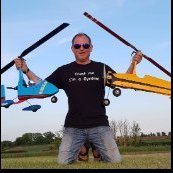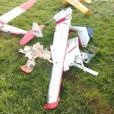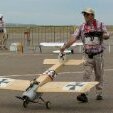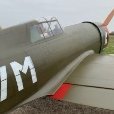All Activity
- Past hour
-
Barnstormer 63 normally does have ailerons! A Mass Build on this forum a few years ago has many builds - all or most had ailerons. My own 63 - ex everybody at my club but not yet flown by me has ailerons and is electric. Note that there are many Barnstormer variants and an updated 63 inch version called Mark One Mark Oneon Outerzone which has barn door ailerons.
- Today
-

Fouga magister 1/4.5 moulded from scratch
dirk tinck replied to dirk tinck's topic in Electric Ducted Fan
https://youtu.be/0oUyZ1aoddc?si=Rj10xenHl0h0FEwU Hi all ! Here's a link for the flight video after paint Thanks all for following all these years ! I'm also very glad to say that there's an article coming up in the October or september issue of RCM&E !! THE CHERRY ON THE CAKE ! -
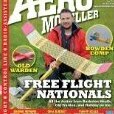
Laser Cutters, any thoughts?
MikeQ replied to Richard Thornton 2's topic in Modelling Money Savers...
Hi The building board is a piece of B&Q 18mm conti board with B&Q 3x3/4 ‘finished’ batons to keep it straight. The Aluminium 50mmx3mm angles are used with some ‘jigging chocs’ that i drew up in Fusion360 and printed on a resin printer. The pieces have holes all the way through for pins. Also 3mm grub screws to tighten up on the angle pieces. The angle pieces are fixed to the building board by 3mm cap head bolts/wing nuts. You have to drill new 3mm holes here and there for each new wing planform but thats ok. its a variation on a jig i saw on Barton Control Line forum. http://controlline.org.uk/phpBB2/viewtopic.php?t=6631 https://stunthanger.com/smf/building-techniques/pizzaz-with-sliced-ribs/ A pit pricey, very heavy, a pain to store when not in use (although i have found some where to ‘hang it’), but builds very straight wings 😂. not much use if you need to stick pins in it though. I have other building boards for that 😀 -
A few snaps taken by WMFC member Mike. Last men standing late Sunday afternoon.
-
Applewood started following Precedent Stampe and Laser 100 prop recommendations.
-
Hi Guys I recently acquired a solidly build Precedent Stampe 1/4 with a Laser 100 fitted. I wasn’t able to speak with the owner so unsure how it flew with its current setup. The engine currently has a 15x10 master air screw prop, which isn’t one of the recommended prop sizes (14-6/8 15-6/8 16/6). I’m all about pottering around scale, with a blip of extra available if I get in trouble. Any recommendations on good prop size for this model/engine combo? thank you.
-

Forum members' new models: Let's see them.
Ron Gray replied to Paul Marsh's topic in All Things Model Flying
Yes Eric, it can fit in the car as a bit of a fun for late afternoon flying on Saturday. -

Forum members' new models: Let's see them.
Eric Robson replied to Paul Marsh's topic in All Things Model Flying
Definitely suitable for B.o.B -

Forum members' new models: Let's see them.
Ron Gray replied to Paul Marsh's topic in All Things Model Flying
Maiden flight for the Limbo Dancer this evening. Ended up with a 2300mAh 4s to get the CG back but may try a larger LiPo as I think it can carry the extra weight further forwards. -
OK, this was hung up in our club model room for many years, it was built as a scale prototype for a full size microlite biplane that never materialised. It's about 80 inch span. We are never going to finish it and are going to have to dispose of it, so anybody fancy an unusual prototype, collection from Aston Ingham, just off J3 on the M50. PM me if you are interested.
-
Thanks for all the replies chaps. Maiden flight done this evening, bit wobbly initially due to too much elevator throw. Flew nicely, landed a bit fast and it went into the long grass at the end of the strip but no damage.
-
Yes, thanks Jon and good to meet you. We certainly did have a good chat with free Spitfire flypast. Jabberwock has now had the first coat of looking at. Its beautifully built and I'm looking forward to a little bit of gentle restoration and then flying.
-
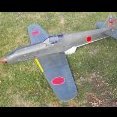
Which DB Barnstormer should I build?
Alan Gorham_ replied to Mr Ficky's topic in All Things Model Flying
Barnstormer 72 has ailerons iirc. Plans and some cut parts are available from the dbsportandscale website. -
Mike Chantler started following 1/6 Westland Whirlwind
-
Hi Phil, Just spoke to Jon and we have always used Cherry Lane as our access to the flying area. Must admit, looks a challenge on your photo view. We are grass cutting on Friday from 10.00 and getting ready for everyone. We shall certainly see what the access is like then. I’ve driven my car on to the Knavesmire Ebor Electric Fly-In before and there are other routes such as from the Knavesmire Road entrance that can be taken, but over the years, we’ve always used Cherry Lane. I've just spoken to a club member who is nearby to the Knavesmire, and he tells me vans get down to the car park at the end of the lane and, he’s walked the route in the last couple of weeks or so. The lane is narrow but only for about fifty yards until it opens up to the car park. We have an issued key for the gate and we drive on and park adjacent to the flying area. We will have a Marshall helping everyone go in the right direction. Look forward to seeing you.
-
Agree with the above about fast taxi tests being a bad idea due to those occasions where the aeroplane leaves the ground with the pilot ill-prepared for that eventuality and the model in a precarious position of half-flying, just waiting to fall out of the air. You'll learn about the ground handling on the way to taking off anyway, so might as well set off with the full intent of making that first flight.
-
I agree with Chris and would not recommend this sort of test for the exact reason you have already described. Takeoff is the time a model is most vulnerable and a fast taxi is a dangerous halfway house. If the model is ready to go, just send it. I trim slightly nose down for a maiden flight to help fight against a steep yank off the ground due to a bump or high rate on that first takeoff. I essentially run it in a straight line until the curvature of the earth gets the model in the air and only use about 80% throttle to protect myself from airflow in the cowl or other weirdness causing the engine to go sick. Once up the first order of business (assuming the model is stable and climbing out) is to get the gear up. I do this to clean up the drag, and because the wheels are in the way should i be in trouble and need to plonk it down in the field. I cannot understand why people fly around with their gear down. It makes absolutely no sense at all. Anyway with the gear up just maintain runway heading for a bare minimum of 10 seconds before you even think about a turn. Then its the usual trimming and so on, stall test/elevator flap mix setup. By now 5 minutes are up, bring it down, wing off, check remaining fuel and for loose articles, put it back together and go again with any rates changes applied. In the case of the typhoon you need to fly it and see how it is. All of my warbirds are trimmed for a moderate level cruise sort of speed and the climb under power, dive under reduced power, and want to lawndart themselves with the gear and flap down. This is where the elevator flap mix comes in and you effectively set an elevator offset to trim the model for the landing configuration. With the model trimmed to a speed just under stalling provided you never touch the elevator on approach you cannot stall the model as a reduction in speed below the trimmed speed will result in a natural nose drop to regain the trimmed speed. You can adjust the rate of descent using throttle and float it on in.
-
Excellent weekend had by all the Gyronuts and spectators who kindly supported this event. Friday and Saturday saw winds of around 30mph so day visitors were down. Still loads of flying, probably more hovering! We did manage to have a backwards race! Sunday was the day as we were blessed with near perfect conditions with over 80 autogyros counted. Lots of test flights for those who brought along there models to trim and quite a few taster flights on the buddy. I'm unsure of the amount raised for charity but it was pushing over £400 ( to be confirmed). A big thanks from me to all those who donated to the raffle, air ambulance is a worthy cause and what it's all about. Even bigger thanks to Winterton Model Flying Club for hosting us yet again, we are a very small part of the aeromodelling community so it really is appreciated. I will post a few photos/videos once I've had chance to go through them. Rich
-
My old friend Canopy Glue does it’s job, with only the odd bit of smearing of that crystal clear canopy. Does anyone manage this job with no small messiness whatsoever? At least the hot weather means the glue sets reasonably quickly. A few internal parts to the sliding section have been added after painting them blue as well as some grey inner frame parts. Masked up and a trial fit before gluing the front and lower frame in place. A little filler to blend the lower edge and thankfully after the glue had set and tape removed the sliding mechanism is bind free. The cockpit area and instruments are complete
-
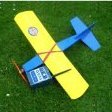
York Ebor Electric Fly-In 2025
Phil Green replied to Robert Thompson 10's topic in Shows, Club Events and Competitions
Not sure how to approach the event Rob, Cherry Lane? do we go down the narrow lane to park? Not sure my van will fit, is it as narrow as it looks? 😀


